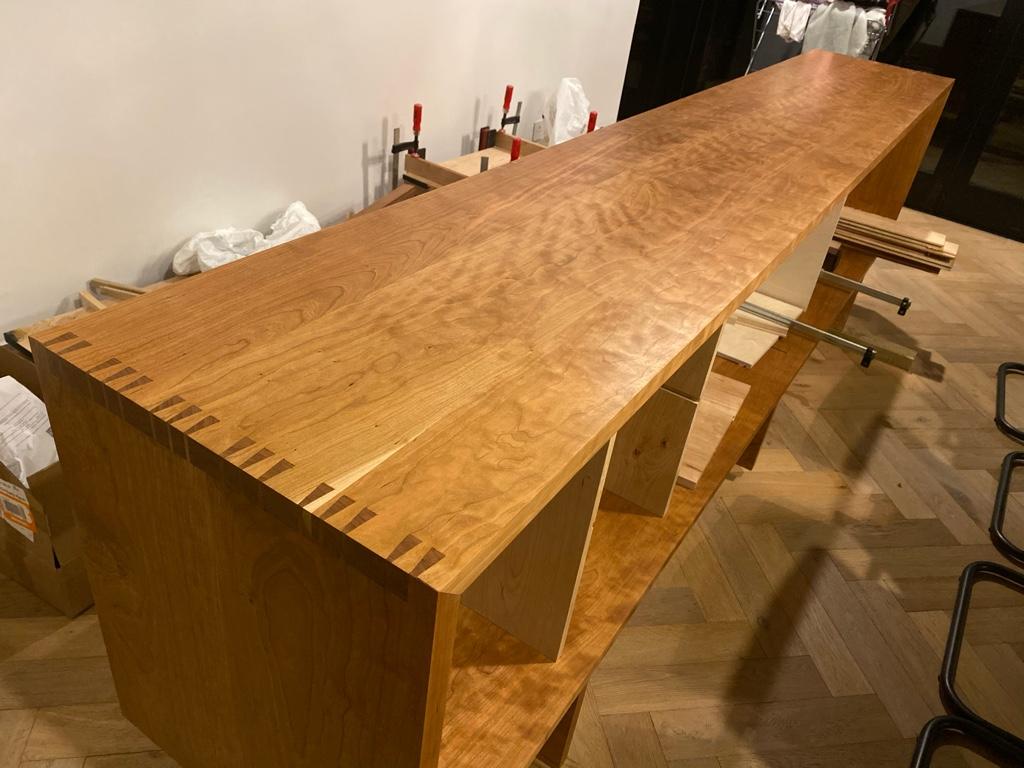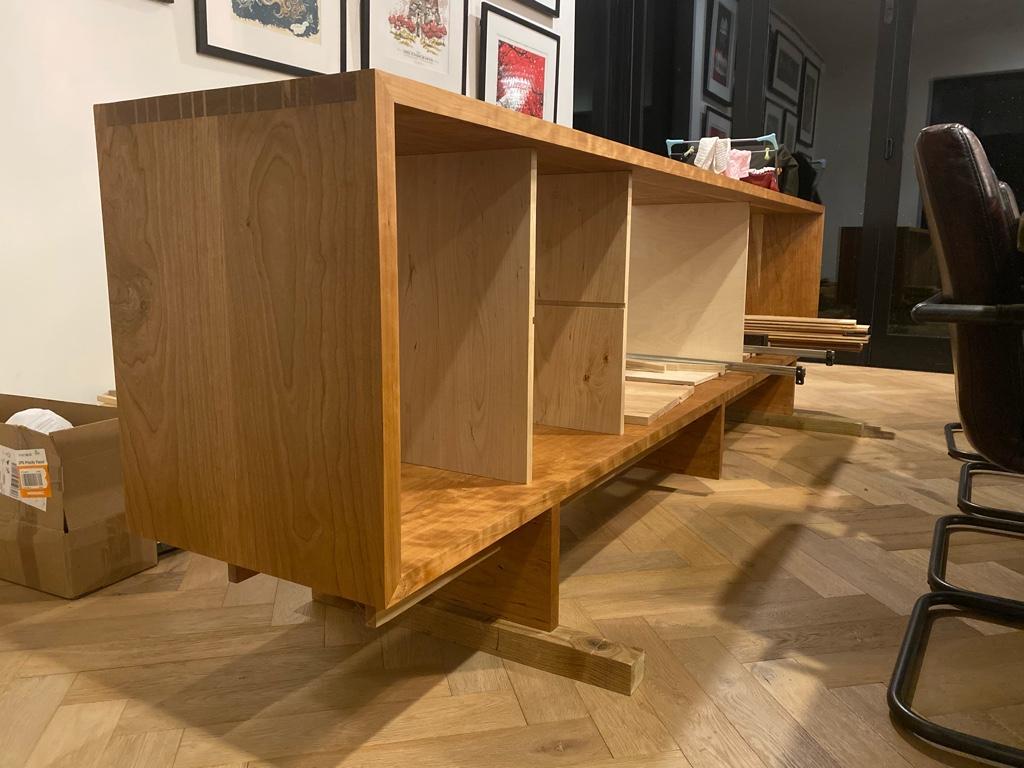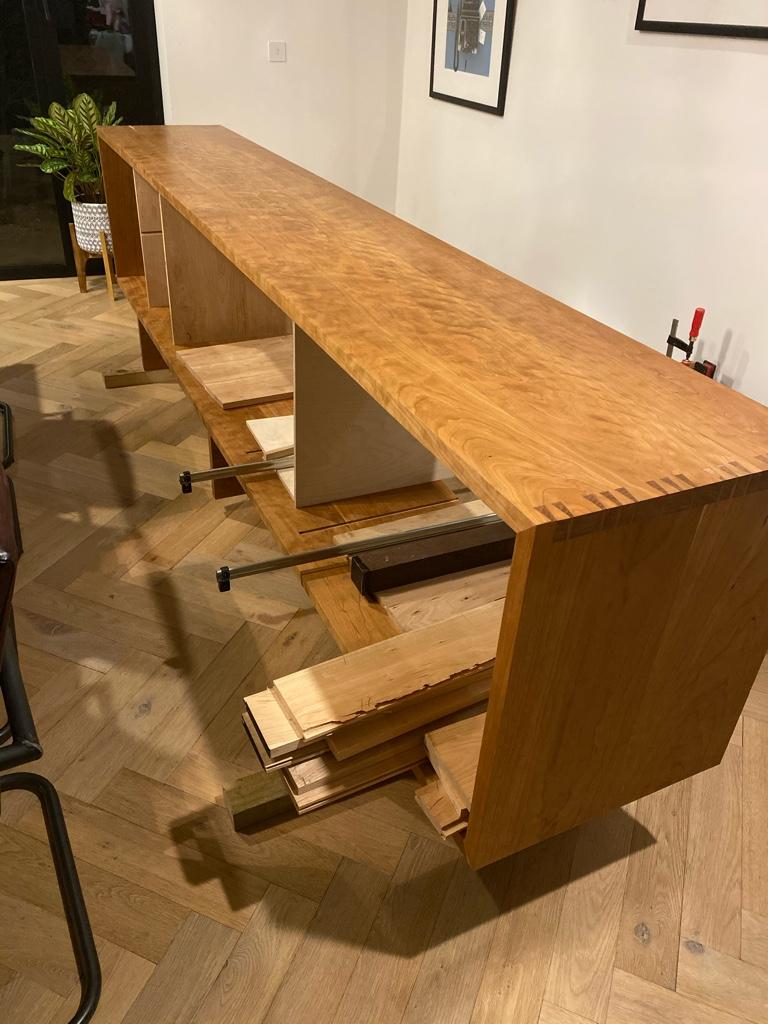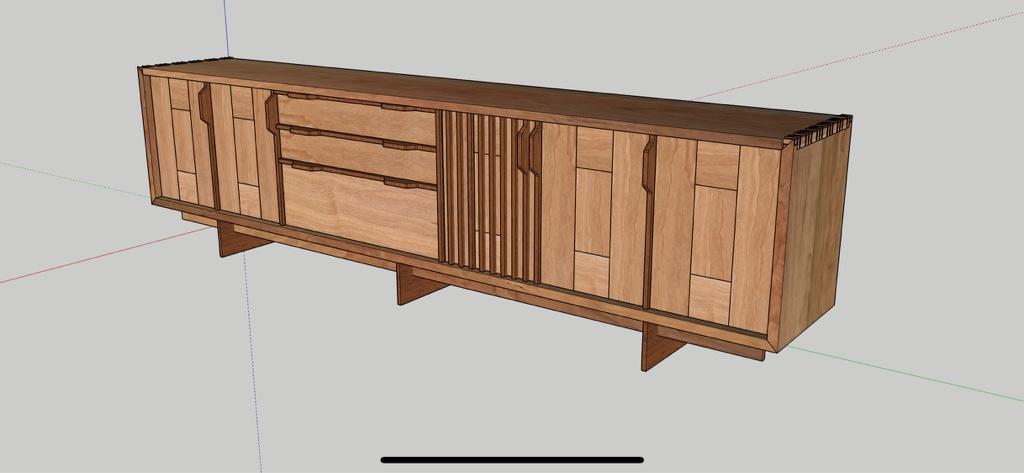That would work":273b0zeb said:
It's not unusual to have a panel set flush in a frame. Hence the bead and butt type methods.
I think the OP wanted to have a flush panel with no movement provision around the panel edge. (What you refer to as gaps?)
Not really possible with a solid panel.
What you're trying to do here is to go counter to centuries of perceived wisdom and good practice. A solid panel will move; indeed solid timber will move (as discussed yesterday in the thread about mitred corners on a 600mm wide solid wood top) alarmingly and you need to make allowances for that movement. If you want the panel to be entirely flush, with no 'gaps' where it meets the rails and stiles then the easiest and simplest way is to use veneered panels. The caveat of course, is that you need to know how to cut your own bandsawn veneers, join them and then lay them to produce the panel.
When I'm doing a project I usually always say to myself ...."
what's the easiest way to do this bit and get a decent result'' You appear
not to be asking that question but substituting '
easiest' for '
most difficult' which is almost bound to see you running into difficulties. Why make life more difficult than it already is? :lol: :lol: - Rob




































